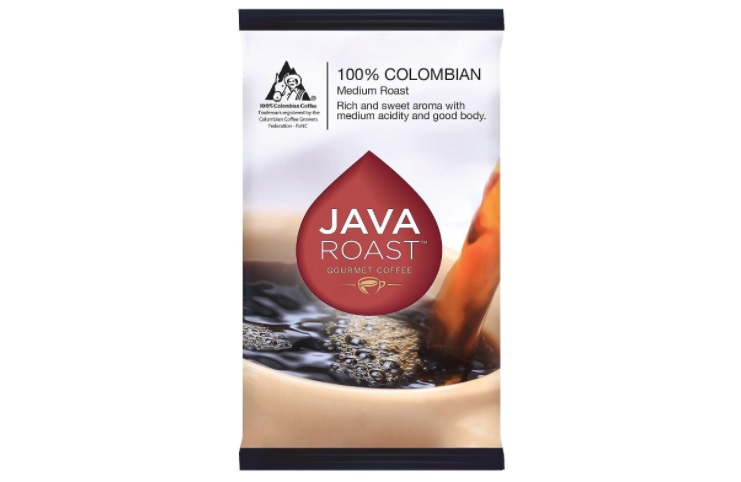
Java Roast Coffee is a celebrated coffee blend known for its rich heritage and distinctive flavor. This blend combines Arabian mocha beans, renowned for their bold and slightly chocolatey taste, with Indonesian java beans, which add a hint of earthiness and herbal notes. Together, these beans create a coffee experience that is both complex and profoundly satisfying.
The history of Java Roast Coffee dates back to the trade routes between Yemen and Indonesia, where these two distinct types of coffee beans were first blended. This historical merging not only marks Java Roast Coffee as one of the earliest known coffee blends but also showcases the deep-rooted tradition of coffee drinking across different cultures. The blend was designed to balance the strong, wine-like acidity of Arabian coffee with the smoother, full-bodied texture of coffee from Java, resulting in a brew that is both robust and harmonious.
Key Takeaways
- Flavor Profile: Java Roast Coffee is celebrated for its rich and complex flavor. The blend typically features spicy notes intermingled with chocolate undertones, making each sip both invigorating and comforting.
- Historical Significance: One of the oldest coffee blends known, Java Roast Coffee has been a favorite among coffee lovers for centuries. Its creation is a testament to the early days of global coffee trade and the lasting impact of these cultural exchanges on our coffee cups today.
- Roast Variations: The flavor of Java Roast Coffee can vary significantly depending on the roast level. Lighter roasts tend to highlight its spicy and herbal notes, while darker roasts enhance the chocolatey depth, making the coffee richer and more intense. This versatility allows enthusiasts to explore a spectrum of flavors within a single type of bean.
Brewing Java Roast Coffee
To fully appreciate Java Roast Coffee, you might want to experiment with different brewing methods. The French Press is known for its ability to produce a rich, full-bodied coffee. This method allows the coffee’s natural oils and fine particles to remain in the brew, enhancing its inherent flavors. On the other hand, the Pour Over technique highlights the coffee’s cleaner, more nuanced notes due to its filter usage, which reduces the oils and sediment in the final cup.
For those who love a strong, concentrated coffee, Espresso is ideal. This method extracts the coffee’s bold flavors and rich crema, making it a favorite for many who enjoy a more intense coffee experience. As a general guideline, a water-to-coffee ratio of about 1:15 to 1:18 is effective for balancing extraction and flavor, with water temperatures between 195°F and 205°F being optimal.
Enhancing Flavors
To enhance the distinct flavors of Java Roast Coffee, consider adding a touch of milk or a sweetener. Milk can soften the intensity of the coffee and bring out its creamy textures, while a hint of sugar or honey can elevate the inherent sweetness of the beans. However, it’s worth trying Java Roast black first to appreciate its original flavor profile before adding any extras.
Low-Acid Coffee Options
For coffee lovers with sensitive stomachs, low-acid options are increasingly popular. These specially processed beans or blends minimize the natural acids that can cause heartburn or indigestion. Java Roast Coffee can also be found in low-acid versions, which maintain the beloved flavors without the discomfort that can sometimes accompany coffee drinking.
Java Roast Coffee in Culinary Practices
Java Roast Coffee isn’t just for drinking; it’s also a versatile ingredient that can enhance a variety of dishes. Its robust flavor makes it a popular choice in both sweet and savory recipes. When used in baking, Java Roast can add a deep, complex flavor to cakes, cookies, and brownies. Its bold notes can complement chocolate particularly well, elevating traditional desserts with a rich, coffee-infused twist.
Popular Recipes
One of the most beloved uses of Java Roast Coffee in cooking is in the preparation of coffee rubs for meats. A basic coffee rub typically includes ground Java Roast, brown sugar, paprika, and a mix of salt and pepper, offering a balance of sweet and spicy that can enhance the natural flavors of beef or pork. For those who enjoy experimenting, coffee can also be integrated into sauces and marinades, adding a unique depth to barbeque sauces or braised dishes.
In addition to its culinary versatility, Java Roast Coffee can also be a star in breakfast dishes. Imagine starting your day with coffee-infused pancakes or waffles, where the brew is mixed into the batter to impart subtle coffee notes. For a more refined dessert, coffee-flavored crème brûlée or panna cotta offers a sophisticated way to enjoy the rich flavors of Java Roast Coffee.
FAQs
How should I store Java Roast Coffee to maintain its freshness?
Store Java Roast Coffee in an airtight container away from light, moisture, and heat. For best flavor, use coffee beans within a month of roasting and ground coffee within one to two weeks.
What are the signs of fresh Java Roast Coffee?
Fresh Java Roast Coffee beans will have a shiny surface due to the oils released during roasting and should have a strong, inviting aroma. If the beans look dull and have a weak scent, they may not be fresh.
How do I choose the right roast and grind for my brewing method?
Select light to medium roasts for methods like pour-over or drip coffee, which highlight the coffee’s inherent flavors. Dark roasts are typically better for espresso or French press. The grind size should match the brewing time; finer grinds are suited for quick extraction methods like espresso, while coarser grinds work well for slower methods like the French press.
Final Thoughts
Java Roast Coffee offers a rich, complex flavor that makes it a favorite among coffee enthusiasts. The blend of spicy and chocolate notes provides a unique taste experience that is versatile enough for various brewing methods. Whether you prefer a robust espresso or a lighter pour-over, Java Roast can meet your coffee needs.









